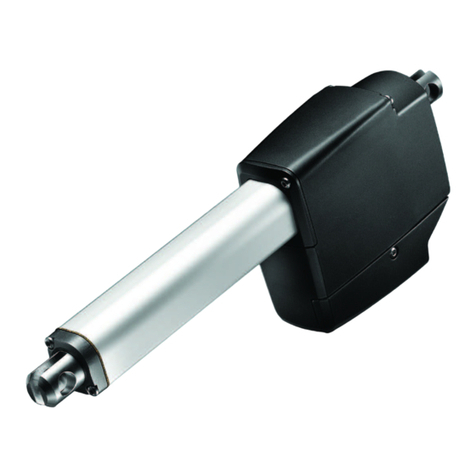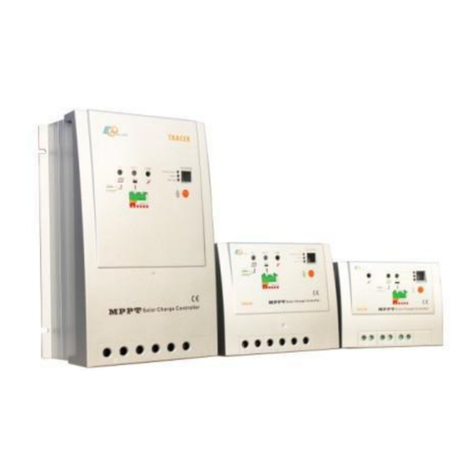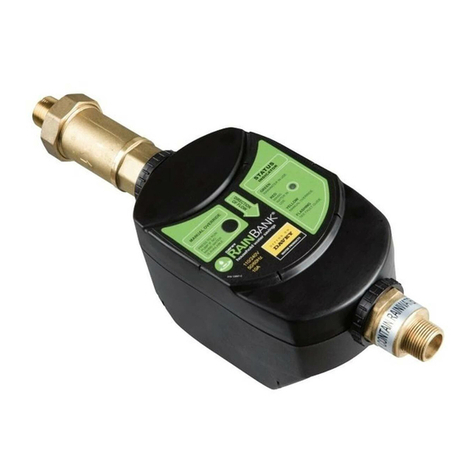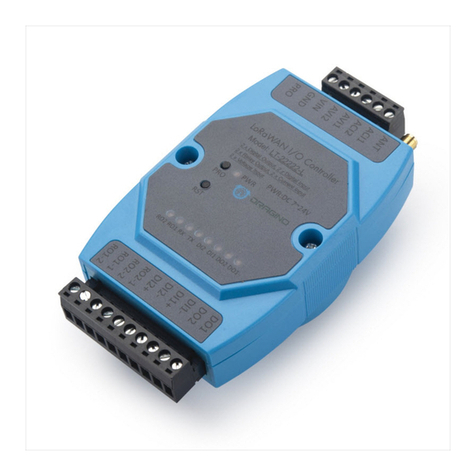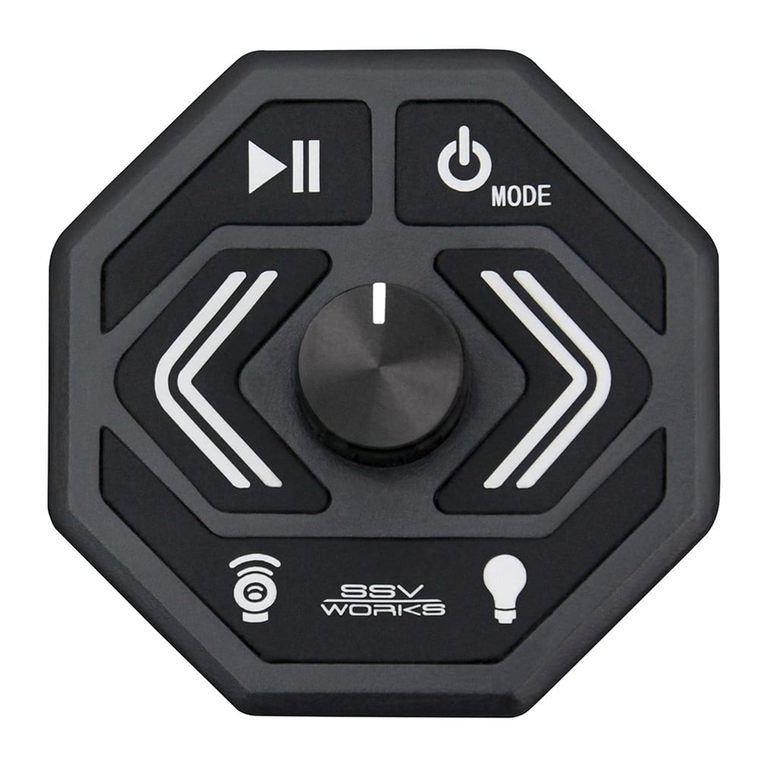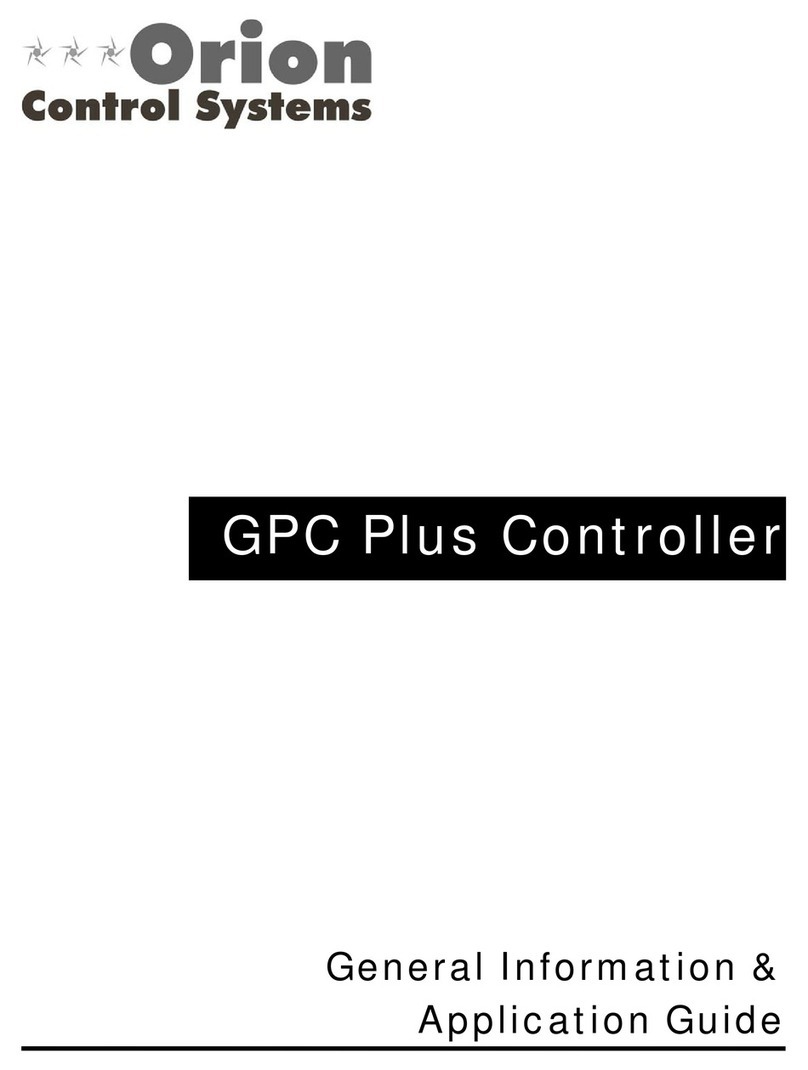Energetiq LDLS EQ-99 User manual


Page 2 · EQ-99 Manager User’s Manual
Table of Contents
Introduction..................................................................................... 3
Safety Terms and Symbols ............................................................ 3
Installation....................................................................................... 5
Installing the Shutter ....................................................................... 7
Front and Rear Panel...................................................................... 8
Operating the Instrument.............................................................. 10
Menu Settings ............................................................................... 15
Specifications................................................................................ 16
Remote Operation ........................................................................ 17
The USB Interface......................................................................... 19
Alphabetical List of Commands ................................................... 20
Error Messages............................................................................. 29
Maintenance and Service ............................................................. 29
Warranty........................................................................................ 30

EQ-99 Manager User’s Manual · Page 3
Introduction
The Energetiq EQ-99 Manager is a smart control system for operating the EQ-
99 Laser Driven Light Source and optional shutter. The front panel has LED
indicators for the lamp on/off state and shutter position, and the VFD display
provides additional status indication as well as the ability to change the
operation of the instrument by adjusting the instrument settings through the
menu. A trigger input on the front panel allows for synchronization of the shutter
with other instruments, with exposure mode control or simply open/close
operation. A USB interface is available for full operation from a computer.
The Energetiq EQ-99 Manager also provides the 12VDC power needed by the
EQ-99 Power Supply Controller.
Safety Terms and Symbols
The following safety-related terms are used in this manual:
Warnings (noted by the WARNING heading) explain dangers that
could result in physical injury or death;
Cautions (noted by the CAUTION heading) explain conditions that
could result in damage to the instrument, other equipment, or your
device.
Notes (noted by the NOTES heading) are not safety-related, and are
intended simply to point out important information.
If, at any time, any of the following conditions exist, or are suspected of existing,
discontinue use of the unit until it can be inspected by qualified service
personnel:
Visible damage to the unit, including damage or stress caused during
product shipment;
Storage of the unit outside the standard storage temperature or
humidity rating, or prolonged storage under harsh conditions;
Failure to operate properly.
If needed, contact your distributor or Energetiq for service or repair to ensure the
safety of the product is maintained.

Page 4 · EQ-99 Manager User’s Manual
Symbols
Power Off Power On
Caution, refer to manual Earth ground
Caution, risk of electric shock
General Warnings
CAUTION
There are no user-serviceable parts inside. All service
and repair work shall be done by Energetiq or
personnel authorized by Energetiq. Modifications done
by non-authorized personnel will void the warranty.
Please see the Service section later in this manual for
instructions on how to obtain service for this instrument.
WARNING
To avoid electrical shock, ensure a 3-prong power cord
is used, and is plugged into an earth-grounded
receptacle. Failure to do so can result in severe injury or
death.
WARNING
Potentially lethal voltages exist within this instrument.
This instrument is intended for use by qualified
personnel who understand the shock and laser hazards
and are familiar with safety procedures required to avoid
injury. Read this manual completely before attempting to
use this product.

EQ-99 Manager User’s Manual · Page 5
Installation of the Controller
The EQ-99 Manager uses a switching power supply which supports 100-
240VAC, 50/60Hz operation, so there is no need for AC voltage selection.
1. Unpack the EQ-99 Manager and all cables.
2. If you have not done so already, unpack the EQ-99 LDLS system and
setup according to the Model EQ-99 LDLS Operation and Maintenance
Manual, which has specific instructions on unpacking and connecting
the EQ-99 Lamp House to the EQ-99 Power Supply Controller.
3. For users of existing LDLS systems:
a. Unplug any 12VDC power supply currently being used to
power the controller. The EQ-99 Manager will provide all
necessary power.
b. If your system is equipped with the EQ-99-RC Remote Control
Module, unplug it. The I/O cable used with the EQ-99-RC can
be used with the EQ-99 Manager, or you can use the HD15
cable supplied with the EQ-99 Manager.
4. Connect the DC power cable.
This has the 2-pin 2W2 connector
on one end and the 4-pin DIN
connector on the other.
5. Connect the I/O cable. This has a
HD15 male connector on each
end. If you were previously using
the EQ-99-RC Remote Control
Module, the cable for that module
can also be used.
6. Connect the interlock. The system ships with an
interlock plug already pre-shorted (a wire
connecting the two pins), however, if you have an
interlock system, remove the wire and connect
your interlock into it. Insert the plug into the
interlock socket.
7. Optional: if you have purchased a shutter, see Installing the Shutter,
below, for shutter installation instructions.

Page 6 · EQ-99 Manager User’s Manual
8. Plug the AC cord into the unit and into the wall outlet. Turn on the
power switch located on the rear panel next to the AC socket, and both
the EQ-99 Manager and the EQ-99 Power Supply Controller will power
up.
If you wish to control the instrument from your computer, connect the instrument
to your computer and install the USB drivers. When the Add New Hardware
wizard appears, if your computer is Internet-connected, you can use Windows
Update to load the driver; otherwise, insert the CD you received with the
instrument. Follow the on-screen instructions. Once the drivers are installed, a
COM port number will automatically be assigned to the controller, typically the
highest COM port in the system.
Ventilation
The EQ-99 Manager has vent holes on both sides of the unit. You must not
block these vent holes or overheating may occur, causing damage to the unit.
Rack Mounting
Rack mounting kits (p/n 1401-RM-1 or p/n 1401-RM-2) for standard 19” racks
are available for the EQ-99 Manager, and supports the rack mount of one
(1401-RM-1) or two (1401-RM-2) units in a 2U (3.5”) high opening.
CAUTION
Do not operate the unit above +40°C ambient, and
ensure the instrument is properly ventilated, or the unit
may overheat and possible damage to the unit may
occur.

EQ-99 Manager User’s Manual · Page 7
Installing the Shutter
The shutter comes assembled and ready for mounting onto the Lamp House. To
attach the shutter, follow these steps:
1. Mount the adapter plate onto the Lamp House and use the supplied 4-
40 flat head screw to secure it:
2. Next mount the shutter housing onto the adapter plate:
3. Finally, secure the shutter to the adapter plate by tightening the
retaining screw:
4. Plug the cable into the EQ-99 Manager. The shutter is now ready for
use.

Page 8 · EQ-99 Manager User’s Manual
Front and Rear Panel
The front panel includes the display, buttons for LDLS and shutter operation,
and the trigger input BNC:
LDLS Control Interface Front Panel
LDLS On/Off
The LDLS button is used to turn the lamp of or off, and is also used to exit the
menu when making menu adjustments and clear errors from the display. To turn
the output on or off, you must press and hold the button for ½ second.
Shutter Open/Close
The Shutter button is used to operate the shutter. When the exposure mode
(Exp Mode) is set to Manual, the button will open or close the shutter. When the
exposure mode is set to Exposure, the button will act as a trigger, causing one
exposure to be taken.
Shutter Trigger BNC
This is a 0V to 5V level or edge sensitive input used to open and close the
shutter remotely. The shell is ground and the center pin is the signal input. For
more information on shutter operation, see Shutter Operation in the Operating
the Instrument section below.
All connections except the trigger input BNC are located on the rear panel:
LDLS Control Interface Rear Panel

EQ-99 Manager User’s Manual · Page 9
Shutter
The shutter connector is a mini-XLR type connector, with pins 1 and 2 providing
the control signals to the shutter. The remaining 3 pins are unused. This
interface is used with the optional shutter attachment for the LDLS lamp house.
For more information on shutter operation, see Shutter Operation in the
Operating the Instrument section below.
I/O Control
This HD15 connector mirrors the pin-out of the EQ-99 Power Supply Controller,
and is used to monitor and control the lamp operation. For more details on the
pin-out and operation of this interface, see the Model EQ-99 LDLS Operation and
Maintenance Manual.
12VDC Power
This 2W2 connector provides the power needed by the EQ-99 Power Supply
Controller for operation. Pin 1 is ground, and pin 2 is 12VDC.
Interlock
The interlock input is a 2-pin Phoenix connector, and provide access to the
interlock functionality of the EQ-99 Power Supply Controller. By connecting
these two pins together, the external interlock input to the EQ-99 Power Supply
Controller is brought high and enables operation. When these pins are not
shorted together, the EQ-99 Power Supply Controller Fault LED will be lit, and
the front panel will indicate an interlock open condition.
Mating Phoenix Plug - shown with shorting wire installed
The pins of the interlock are connected to the pins of the I/O Control as follows:
Function Interlock Pin I/O Control Pin
EXTERNAL INTERLOCK 1 13
ISOLATED +5V SUPPLY 2 5
Connection between Interlock and I/O Control

Page 10 · EQ-99 Manager User’s Manual
USB Connector
The USB connector is a standard Type B female connector, and can be plugged
into any USB 1.1 or USB 2.0 port. For more information on using the USB
interface, see Remote Operation, below.
Operating the Instrument
The EQ-99 Manager can be broken down into two sections: the EQ-99 Power
Supply Controller operation and the shutter operation.
EQ-99 Power Supply Controller Operation
The EQ-99 Manager both controls the output of the lamp as well as monitoring
the status of the controller. Using the On/Off button, you can easily control the
lamp, and control is also available over the USB interface.
The LDLS lamp is turned on by pressing and holding the LDLS button for at
least 1 second then release. The green On LED will illuminate, and the lamp will
start the turn-on process. Likewise, to turn off the lamp, press and hold the LDLS
button for 1 second then release.
The VFD display will indicate the state of the lamp with one of the following
icons:
Icon Normal States Icon Fault States
Lamp Off
No Controller
Detected
Lamp Pre-Start
Lamp Fault
Laser On
Controller Fault
Lamp On
Interlock Open
During a normal turn-on process, the lamp will start from the Lamp Off state,
briefly move to the Lamp Pre-Start state, then will dwell at the Laser On state for
up to two minutes as the laser is stabilized. Once the laser is stable, the lamp will

EQ-99 Manager User’s Manual · Page 11
be turned on, the Lamp On state will be indicated, and the light source is ready
to be used.
If the interlock is open, the interlock open state will be indicated. Note that the
Controller Fault LED on the EQ-99 Power Supply Controller will be lit, but
because fault is caused by the interlock, only the interlock icon will be displayed.
Immediately after closing the interlock, the controller interface will indicate a fault
for a brief period of time until the fault can be cleared by the EQ-99 Manager. A
controller fault that persists for more than a couple of seconds after the interlock
is closed indicates a different problem. When dealing with either a lamp fault or a
persistent controller fault, consult the EQ-99 User’s Manual for more information
on how to address this problem.
Shutter Operation
Control over the optional shutter can be done one of three ways: the front panel
button, the shutter trigger input, or over the USB interface. The VFD display will
actively remote the state of the shutter, as will the Open/Close LEDs. The icons
are as follows:
Icon Shutter State
Shutter Closed
Shutter Open
The shutter offers two modes of operation: manual and exposure. In manual
mode, a press of the shutter button will open or close the shutter, and the
shutter will remain in that state.
In exposure mode, the shutter is opened for a defined exposure time and then
closed. Pressing the shutter button when the shutter is closed will open the
shutter and automatically close the shutter after the programmed exposure time.
Pressing the shutter button while the shutter is open will immediately close the
shutter.
The Shutter Trigger input BNC on the front of the unit provides an external
trigger input for synchronizing the shutter with external events. The trigger can
be configured for either edge or level sensitivity. There are five trigger modes:
Edge, Pos Any positive edge will cause a trigger of the shutter system.

Page 12 · EQ-99 Manager User’s Manual
Edge, Neg Any negative edge will cause a trigger of the shutter system.
Level, Pos When the voltage is 5V, the shutter will be open, when 0V, it
will be closed.
Level,Neg When the voltage is 0V, the shutter will be open, when 5V, it
will be closed.
Off Shutter trigger input is disabled.
In Edge modes, an appropriate trigger transition acts nearly the same as a press
of the shutter button: in manual mode, it will open or close the shutter, and in
exposure mode, it will trigger an exposure. The only difference is when in
exposure mode and the shutter is open: in this case, the trigger is ignored. Edge
modes can be used with either manual or exposure shutter modes.
In Level modes, the shutter will follow the level input. In Level, Pos, 5V applied to
the trigger input will open the shutter and 0V will close it. In Level, Neg, the logic
is reversed. When in either Level mode, the shutter button can be used to
manually override the trigger level, but at the next transition, the manual override
will be cleared and the trigger will again operate normally. Level modes can only
be used in manual shutter mode.
For example, if the instrument is configured for Level, Pos and 5V is applied to
the trigger input, the shutter will open. If the user then presses the shutter
button, the shutter will close, and remain closed, even though the trigger input is
at 5V; this is considered a manual override. However, once the trigger input
goes to 0V, the manual override will be cleared, and the next transition to 5V will
open the shutter.
Maximum Shutter Rate
The shutter is only designed to operate at a maximum open/close rate of 2Hz
(500ms per open/close cycle). The controller will prevent operation beyond this
cycle rate by monitoring the time between opens, and delaying an open request
until at least 500ms has elapsed.
For example, if you open and close the shutter, and in less than 500ms after the
last open, try to open the shutter again, the shutter will not actually open until it
has been 500ms since the last open.
Manual Shutter Operation
In the event you need to manually operate the shutter, there is a manual
operation access port located on the bottom of the shutter. Use a small flat-bad
screw driver to slide the shutter open or closed.

EQ-99 Manager User’s Manual · Page 13
Manual Operation Port and three post-mounting holes
Shutter Timing Diagrams
Below are a series of timing diagrams that illustrate the operation of the shutter
when controlled by the trigger input.
In this first diagram, Trig is set to Pos, Edge, and the Shutter is set to Manual.
As you can see, for every rising edge of the trigger input, the shutter output
changes state (closed to open or open to closed):
0 200 400 600 800 1000 1200 1400 1600 1800 2000
ShutterClosed
ShutterOpen
0V
5V
Shutter
State
Trigger
Input
Positive Edge, Manual
Likewise, with a Trig set to Neg, Edge, for every falling edge of the trigger input,
the shutter changes state:
0 200 400 600 800 1000 1200 1400 1600 1800 2000
ShutterClosed
ShutterOpen
0V
5V
Shutter
State
Trigger
Input
Negative Edge, Manual
The graphs above show a much longer pulse width for readability, but the
instrument is very sensitive to trigger input pulses and can operate with pulse
widths as short as 10 microseconds.
Level modes do not monitor the edges, but rather the level of the trigger input,
opening or closing the trigger based on the voltage. For positive level, if the
voltage is high, the shutter is open, and if the voltage is low, the shutter is
closed, as shown below:

Page 14 · EQ-99 Manager User’s Manual
0 200 400 600 800 1000 1200 1400 1600 1800 2000
ShutterClosed
ShutterOpen
0V
5V
Shutter
State
Trigger
Input
Positive Level
Likewise, with a negative level, the logic is reversed, and the shutter is open
when voltage is low and closed when voltage is high:
0 200 400 600 800 1000 1200 1400 1600 1800 2000
ShutterClosed
ShutterOpen
0V
5V
Shutter
State
Trigger
Input
Negative Level
When using the timed exposure mode, you specify how long the shutter is to
remain open for each trigger. Exposure timing is only valid for edge (positive or
negative) trigger modes. Below is a timing diagram of positive edge trigger
mode and an exposure time of 200ms:
0 200 400 600 800 1000 1200 1400 1600 1800 2000
ShutterClosed
ShutterOpen
0V
5V
Shutter
State
Trigger
Input
Positive Edge, Exposure = 200ms
Care should be taken to ensure your trigger input does not exceed the 2Hz
(500ms) operating speed of the shutter. Operating above that rate will lead to
unexpected exposure times. Below is an example of shutter operation with a
positive edge input in manual mode. As you can see, the shutter does not open
on every other pulse, as you would expect, but rather, the instrument delays the
opening until the 500ms after the last open trigger, leading to the varied
exposure times:
0 200 400 600 800 1000 1200 1400 1600 1800 2000
ShutterClosed
ShutterOpen
0V
5V
Shutter
State
Trigger
Input
Positive Edge, Manual, Trigger Speed Exceeds Shutter Capability

EQ-99 Manager User’s Manual · Page 15
Menu Settings
The EQ-99 Manager has a very simply menu interface, but it does allow
changes in operation without needing a PC to make the adjustment.
To enter the menu, press and hold the Shutter button. Once the menu is
displayed, you can release the button.
To cycle through the menu items, press and release the Shutter button.
To change a menu setting, press and hold the Shutter button until an asterisk (*)
shows up to the right of the setting, then release the button. Once the asterisk is
display, you can change settings by pressing and releasing the shutter button.
Once you have changed the setting to the desired value, again press and hold
the shutter button until the asterisk disappears. You can continue to cycle
through the menu.
Pressing the LDLS button at any time will exit the menu. If you were in the
middle of making a setting change, it will be saved.
The following menu settings are available (default values are indicated in bold):
Setting Description Value Range
Trig Trigger Mode – selects the
sensitivity of the trigger input BNC.
Edge, Pos
Edge, Neg
Level, Pos
Level, Neg
Off
Shutter Shutter Mode – selects manual or
time controlled exposure.
Manual or
Exposure
Exp Time
Exposure Time
This is only displayed if Shutter
Mode is set to Exposure)
100ms to 30000ms
Shutter Init The initial state of the shutter on
power-up.
Closed or
Open
Lamp Time The cumulative number of hours the
LDLS has been on. 0.00 to 9999.00
Reset Lamp
Time Resets the lamp time to zero. No or Yes
S/N Serial number of the instrument.

Page 16 · EQ-99 Manager User’s Manual
Specifications
Description Specifications
EQ-99 Manager
Power
Voltage 12V
Maximum Current 10A
Connector 2W2 Female
I/O Control
Connector HD15 Female
Interlock
Mating Connector Phoenix 1827703
Shutter
Control
Connector Switchcraft Mini-XLR Female
Voltage 10.7V
Current 1.5A (typical)
Maximum Cycle Rate 2 Hz
Exposure Window 100 ms to 30 s
Trigger
Connector BNC, center positive
Voltage 0V or 5V
Minimum Trigger Pulse Width 10 microseconds
General
Indicators LEDs for LDLS and shutter status
Display VFD, 2x20
Computer Interface USB 2.0 Full Speed (Type B)
AC Power 84-264VAC, 50/60Hz, 150W
Size (H x W x D) [inches (mm)] 1.82(47) x 8.5(215) x 11(280)
Operating Temperature +10°C to +40°C
Storage Temperature -20°C to +60°C
Weight 3.4 lbs (1.6kg)

EQ-99 Manager User’s Manual · Page 17
Remote Operation
While the instrument does not have a GPIB interface, the command structure
and parsing were developed around the IEEE-488.2 standard, and the
command/response format is consistent with the standard.
When sending commands to the instrument, you must terminate the command
string with a carriage return (ASCII 13) or line feed (ASCII 10), or both. The
instrument will not start processing a command, or go into remote mode until it
has received a carriage return or feed command terminator.
Commands are grouped into two major categories: device-independent and
device-dependent commands. Device-independent commands include all the
IEEE-488.2 supported commands plus other commands that are universal
across all instruments. Device-dependent commands are specific to a class of
instruments, such as LDLS commands for the EQ-99 Power Supply Controller.
Device-Independent Commands
The following device-independent commands are supported:
*IDN?
*RST
BEEP
BEEP?
BRIGHT
BRIGHT?
DELAY
ERRors?
ERRSTR?
MESsage
MESsage?
REMERR
REMERR?
SN?
TIME?
TIMER?
VER?
Device-Dependent Commands
Device-dependent commands are specific to a class of instruments, in this case,
LDLS control.
LDLS Command List
LDLS:COND?
LDLS:EVEnt?
LDLS:EXPosure
LDLS:EXPosure?
LDLS:EXPMODE
LDLS:EXPMODE?
LDLS:OUTput
LDLS:OUTput?
LDLS:LAMPTIME
LDLS:LAMPTIME?
LDLS:SHUTINIT
LDLS:SHUTINIT?
LDLS:SHUTter
LDLS:SHUTter?
LDLS:TRIGMODE
LDLS:TRIGMODE?

Page 18 · EQ-99 Manager User’s Manual
Command Syntax and Concatenation
All commands use a common syntax for constructing the command and
parameter passing. Commands are case-insensitive, and some commands have
optional characters, which are denoted as lower-case characters in the
command definition. For example, LDLS:EVEnt? can be shortened to
LDLS:EVE? This allows for command abbreviation and therefore reduced
communication times.
The input buffer of the instrument allows for up to 128 characters to be received
before a command overflow error occurs. If a command overflow does occur,
the entire buffer is discarded and an E-102 (Message too long) error will occur.
If a command requires one or more parameters, place a space between the
command and the first parameter, then use a comma to separate additional
parameters. For example, the lamp output on command might look like:
LDLS:OUTPUT 1
It is also possible to concatenate multiple commands together as a single
communication to the instrument. By using a semicolon, multiple commands
can be sent to the instrument at once, but command processing will not start
until all commands and the command terminator have been received. For
example, to open the shutter and turn on the lamp, the command would look
like:
LDLS:SHUTTER 1;LDLS:OUTPUT 1
Command Paths
The command set is structured in a tree-like organization, where commands for
a common device or function are grouped together. For example, all commands
specific to the LDLS start with a “LDLS:” prefix. This is called the command path.
When issuing multiple concatenated commands to the instrument, it
“remembers” the command path of the previous command, and allows you to
omit the common path from the second command. Using the example above,
where the shutter was opened and the output turned on, it could also be
shortened by omitting the second “LDLS:” portion because when the OUTPUT
command is processed, the command parser “remembers” it’s position in the
command tree and starts looking for the command at that level. The command
could therefore be shortened to this:
LDLS:SHUTTER 1;OUTPUT 1
Removing the optional characters from the commands, you can further shorten
the command to:

EQ-99 Manager User’s Manual · Page 19
LDLS:SHUT 1;OUT 1
Numeric Substitutions
For command readability, you can also substitute alternate values for zero (0)
and one (1). “0” can be replaced by “CLOSED”, “OFF”, “NEW”, or “FALSE”. “1”
can be replaced by “OPEN”, “ON”, “OLD”, or “TRUE”.
The USB Interface
Because of its speed, expandability, and commonality, the USB interface has
become the interface of choice for newer PC-connected devices. Unlike GPIB,
USB uses inexpensive cables and allows up to 127 devices to be connected to a
single USB master.
To keep complexity to a minimum, once you have installed the USB drivers, the
instrument will appear as a virtual serial port that you can use just like a normal
serial port. In this way, you can communicate to the instrument without requiring
special software modifications to your existing applications.
Unlike the RS232 interface, using the USB interface requires software drivers
(provided on the CD with your instrument or available over the Microsoft
Windows Update service) to be loaded onto your PC. Follow the instructions in
your instrument manual for installing the USB drivers.
Once a COM port has been assigned to an instrument, it will continue to use the
same COM port unless it is reassigned through the Control Panel.
Cable Connections and Interface Settings
The EQ-99 Manager uses a full-size USB Type B socket. You may use any USB
1.1 or 2.0 certified cable. The baud rate is fixed at 38,400.
Baud Rate 38400
Parity None
Data Bits 8
Stop Bits 1
Flow Control None
Ensure to disable flow control. Failure to do so will prevent the instrument from
sending data back to the PC.

Page 20 · EQ-99 Manager User’s Manual
Alphabetical List of Commands
*IDN?
Synopsis Query the instrument identification
Syntax *IDN?
Details Returns the identification string for the instrument in the following format:
Energetiq Model SN Ver Build
Response Description
Model The model number of the product, such as ‘EQ99-CONT’.
SN The serial number.
Ver The firmware version.
Build Internal build number.
*RST
Synopsis Reset command
Syntax *RST
Details Resets the instrument to factory defaults, and the output is shut off. The unit
remains in remote mode.
See Also *RCL
BEEP
Synopsis Set the beep enable
Syntax BEEP [enable]
Details Causes the instrument to beep, or enables or disabled the beep sound for
error messages and other events that generate and audible response. If
enable is omitted, it is the equivalent of doing a ‘BEEP 2’.
Argument Value Description
enable 0 Disable the beep sound
1 Enable the beep sound
2 Generate one beep
See Also BEEP?
BEEP?
Synopsis Query the beep enable
Syntax BEEP?
Details Returns the value of the Beep register.
Other manuals for LDLS EQ-99
1
Table of contents
Popular Controllers manuals by other brands
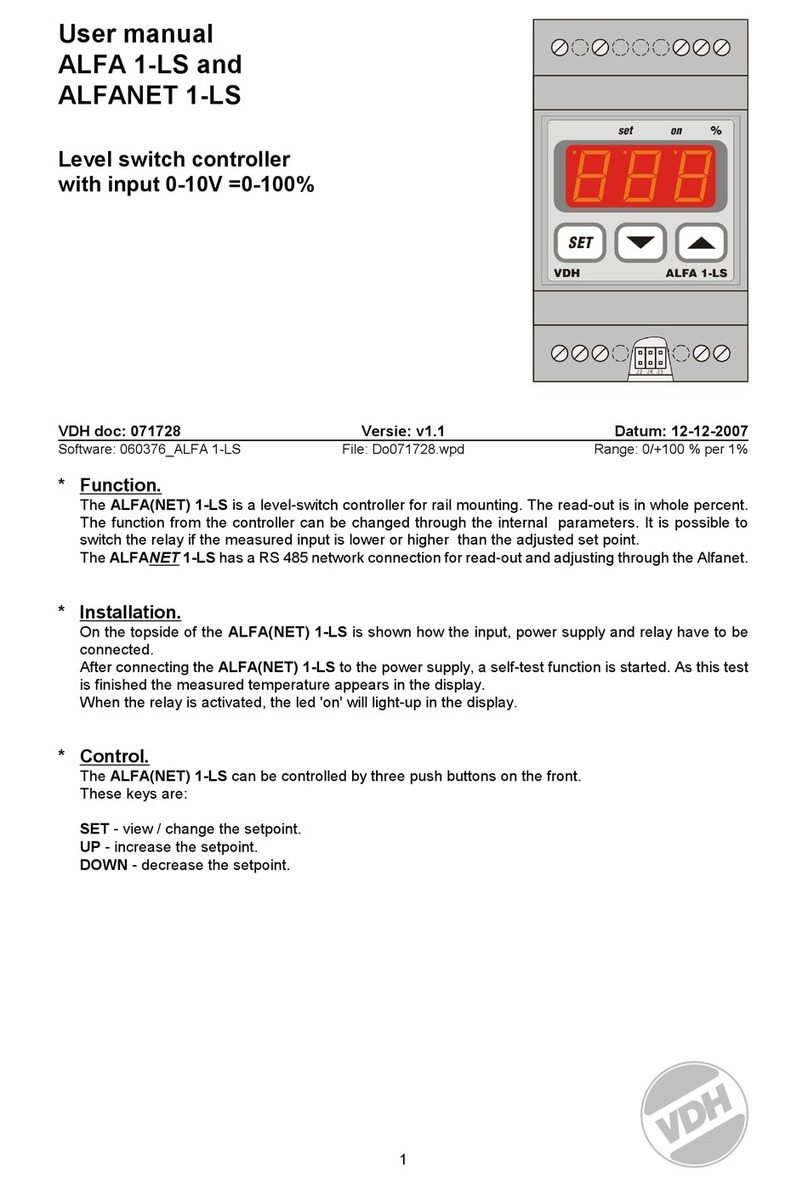
VDH
VDH ALFANET 1-LS user manual

Mitsubishi Electric
Mitsubishi Electric FX3G SERIES Quick start manual
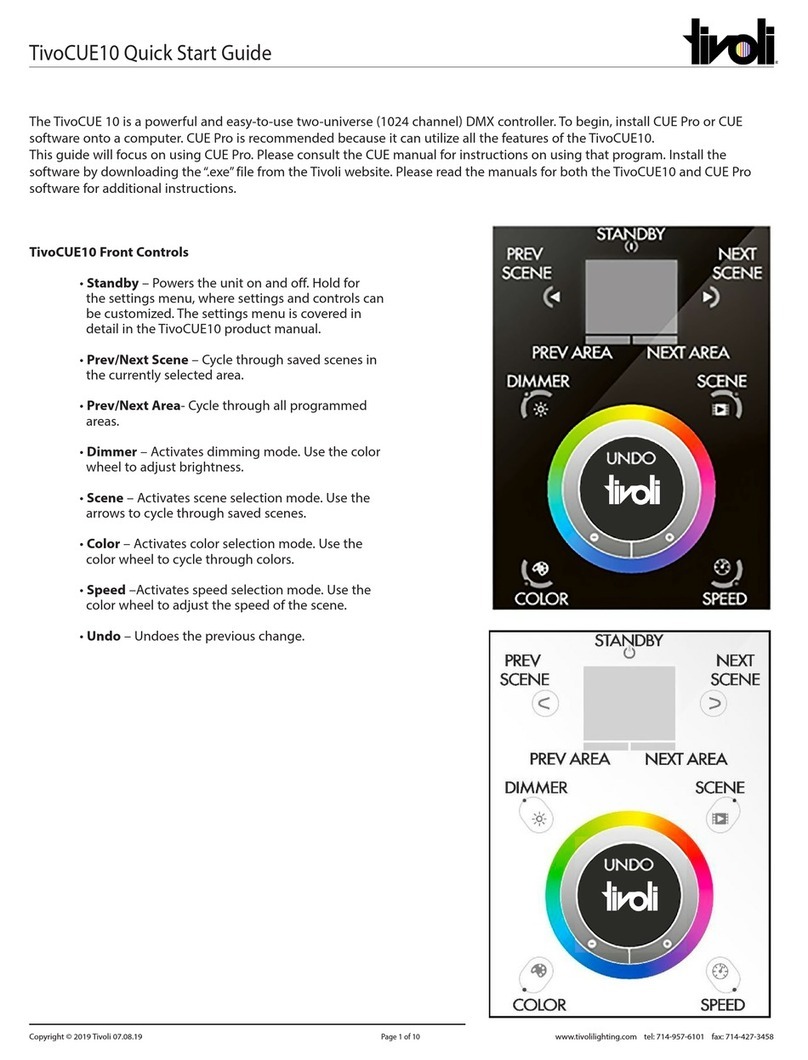
Tivoli Audio
Tivoli Audio TivoCUE10 quick start guide
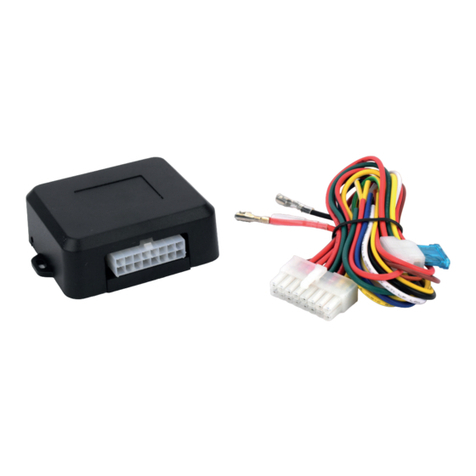
Phonocar
Phonocar 09022 instruction manual
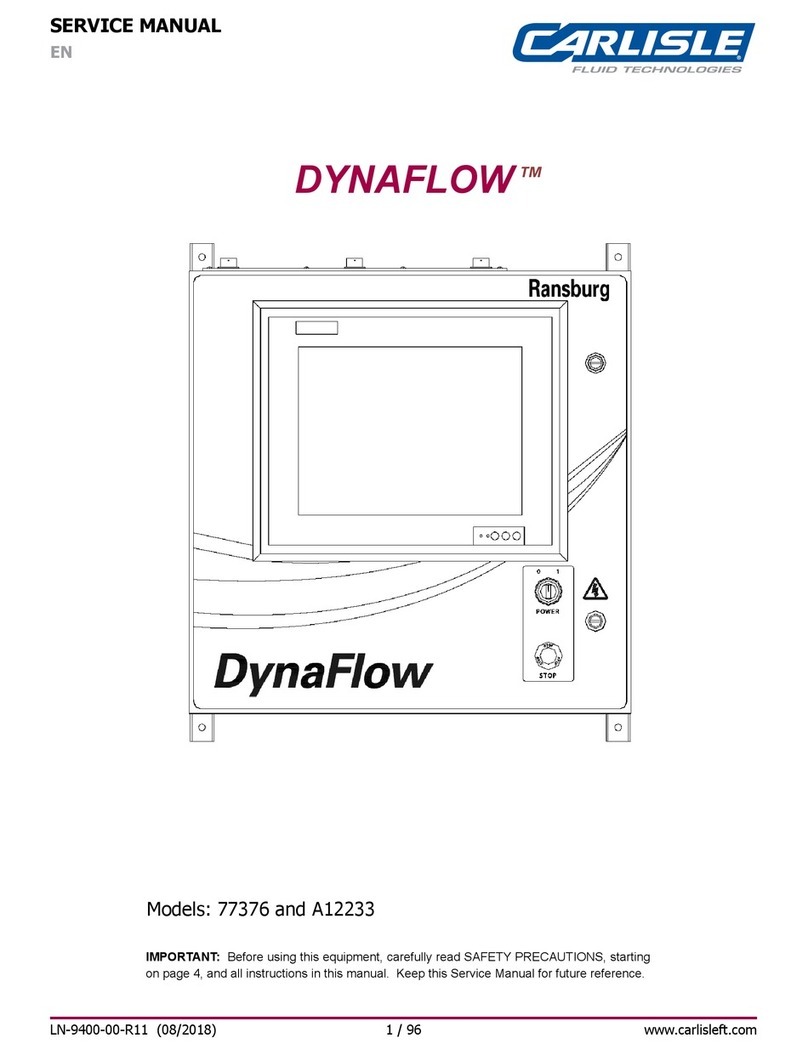
Carlisle
Carlisle Ransburg DynaFlow 77376 Service manual
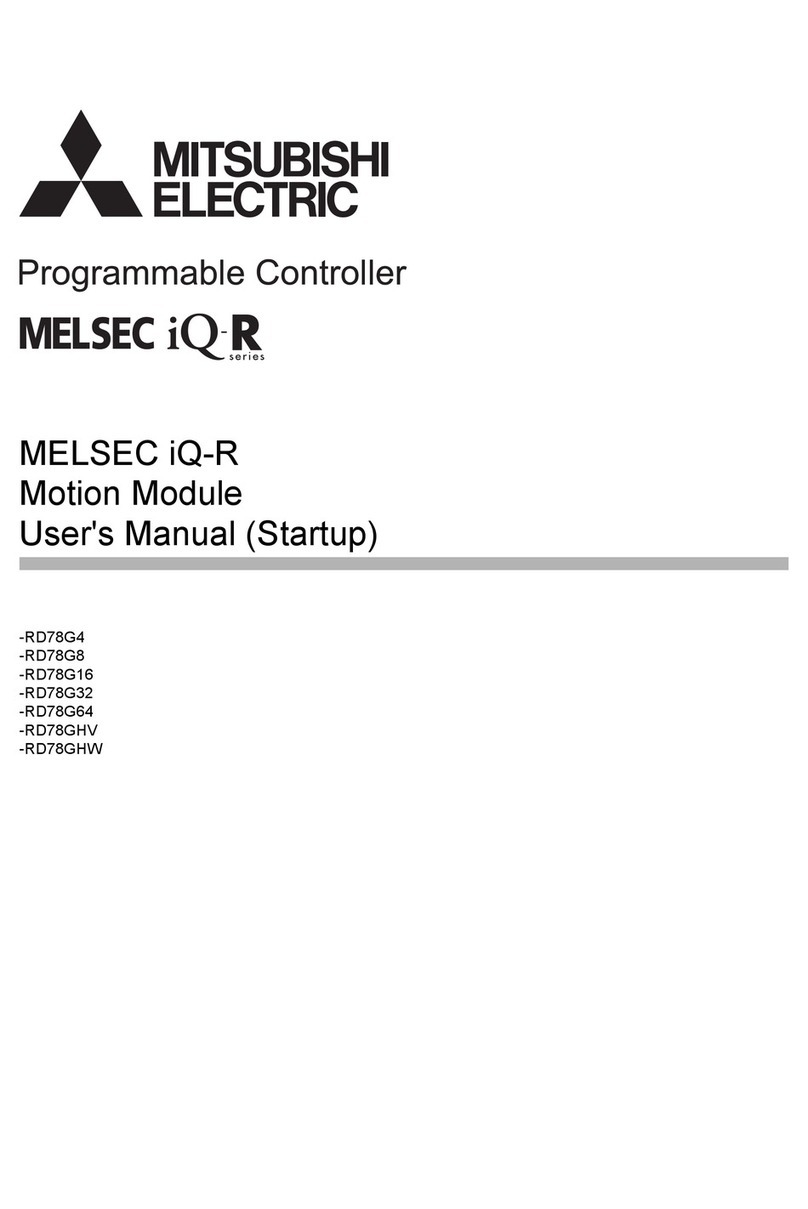
Mitsubishi Electric
Mitsubishi Electric MELSEC iQ-R RD78G4 user manual
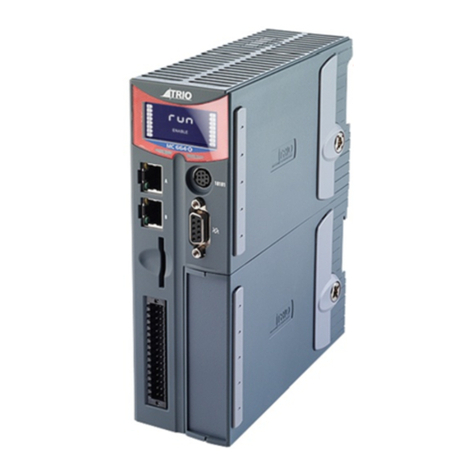
Trio
Trio MC664 Quick connection guide
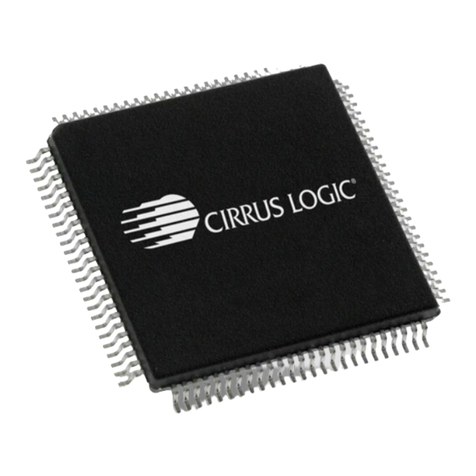
Cirrus Logic
Cirrus Logic Crystal LAN CS8900A Application note
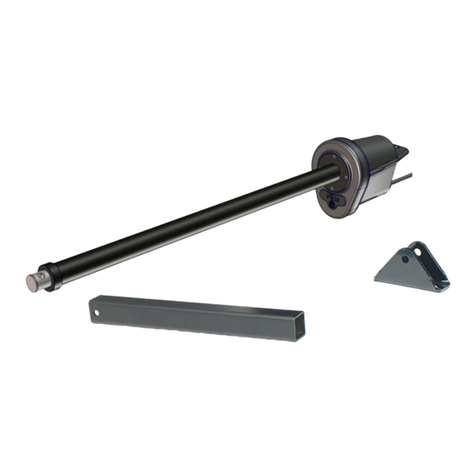
Nice
Nice Apollo 816 LA Installation and reference manual
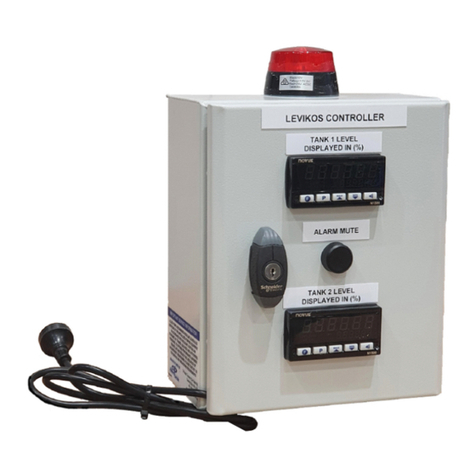
Allied Pumps
Allied Pumps Levikos M18 Operation & maintenance manual

esera
esera ECO 100 PRO quick guide
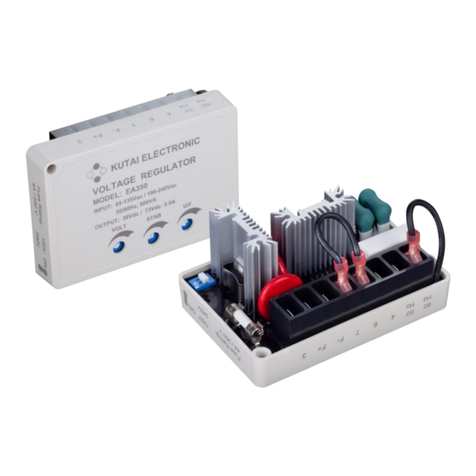
Kutai electronics
Kutai electronics EA350 Operation manual
